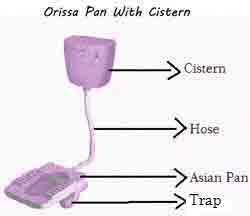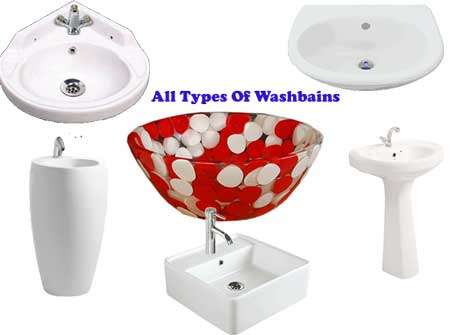Bio toilet is a type of toilet which disintegrates and decomposes the human waste into water and biogas. The decomposition is carried out by bacteria in the Bio-digestion tank.
Bio-toilets are environment-friendly, reduce the sewage problem and also reduce water consumption in the toilets. Because the standard toilets we use requires 3-6 litres of flushing, but for bio-toilets, we need only .5 to 1 litters.
The Topics We are going to cover on this Article are,
How Bio Toilets Works?
Bio-toilets contain two parts in the structure. 1) The toilet 2) Bio-digestion toilet
The toilet drain is connected with decomposition tank. A ceramic or steel may make the toilet. It can be a water closet or a Squatting pan.
The Bio-digestion tank divided into multiple sections to process the human waste in different stages. The decomposing tank will have three output values. One is to remove the fouls smell. Another one is to remove the decomposed gas like methane. And another is for to remove the water.
Once the human waste is flushed through the toilet, the waste reaches the bio-digestion tank. The Anaerobic bacteria present in the bio-digestion tank start to bio-digest the human waste. These anaerobic materials can withstand a long range of temperatures from freezing temperature to 80 degrees Celsius. These anaerobic batteries decompose the human waste into methane and water. The Methane gas is sent through the vent, and the water can be treated for recycling usage.
The methane gas can be stored to use in the Kitchen stove or used in the methane generator to produce the electricity.
These bio-toilets can be installed anywhere without needing a big septic tank or a sewage facility.
Introduction Bio-toilets in Indian Railways:
Indian Railways is one of the big railway networks in the world. It faces many challenges in the everyday operations because of the vast population using it every day.
One of the main challenges of the Indian railways is sanitation. There is no sewage facility available in the rails. The human waste is directly discharged in the railroads directly without any treatment. This creates a lot of Sanitation issues.
This problem is a long-running problem. To solve the issue presently now some of the toilets in the coaches are replaced with bio-toilets. It is almost six years since this replacement experiments started. When you visit the toilet in rail coach, you may see a small sticker with “This is a Bio Toilet”. At present, the bio-toilet digestion tank has six partitions for decomposing the human waste. A ball valve is used to avoid the garbage dumped in the toilets to send into the bio-digestion tank.
The bio-digestion tank is made up of steel and the bacteria used are Antarctica anaerobic bacteria. At present, the main issue faced by the Indian railways is the garbage dumped in the toilets, which block the toilet for usage and creates a big problem. Because the passengers are used to the old toilets, they have used. The railways were making people understand the difference between the regular toilet and bio-toilets to avoid the problem like this.
The experiment is going on for almost more than six years. Many changes are made in the design to avoid the issues which are encountered. But for an essential public sector like Indian railways addressing a big issue like this should not take this much time, I hope Indian railways will speed up the experiment and improve the design to avoid all practice difficulty and perfect this type of toilets to provide better sanitation for its passengers.
Indian railways are planning to replace all the standard toilets to Bio-toilets slowly.
Because of the low market of the bio toilets, many private companies don’t provide many funds for the research and development of these types of toilets.
Difference between Normal Toilets vs Bio-Toilets:
There are many differences between the standard toilet and a bio-toilet system. The bio-toilets may look like a standard toilet for the appearance, but it is a bit different from the time we press the flush button.
Water usage: Bio-toilet uses very less water compared to the regular toilet. Some bio-toilets will not use any water at all. So bio toilets are much better in water consumption. Space: The space required for the bio-digestion tank is one-third of the septic tank size. So the area required is small compared to the usual toilet septic tank.
Cost: The cost of the typical toilet installation and the significant septic tank cost are equal to the bio tank system. But if the standard toilet uses the Sewage system, then the compared installation cost of the conventional toilet is less than the bio-toilets. So based on the initial cost the regular toilet is cheaper.
Foul Smell: Although the Foul smell from the Bio-toilet system is reduced, but it is not entirely removed. Standard toilets have around of 50 CM water seal in the trap way to protect the foul smell from the sewage pipeline or the septic tank. So the Normal toilet is better, if have a good ventilation system, the bio toilets also will not have any issue.
Maintenance: The maintenance of the septic tank should be carried out least five years once, but theoretically the bio-digestion tank needs no maintenance.
Recycling: The bio-toilet systems are much better in the recycling process because the water can be reused in any form land or gardening purpose directly without any treatment. But there is no recycling process of the waste from the standard water closet. And the gas from the bio-toilet can be used in methane generator to produce power or the gas can be used directly for burning process when stored.
Impact on Environment: Theoretically Bio-Toilets don’t discharge any waste or untreated portion to the environment whereas the standard toilet removes the waste directly to the environment. The sewage issue is a significant impact on the environment. No waste is discharged to air or land by the bio-toilets.
Different types of Bio-Toilets:
From the introduction of the bio-toilets, these toilets got a lot of design changes and variations to perfect the technology. Because of the various now in the market, we can get a much different type of bio-toilets. We can see some of the different bio-toilets available in the present market.
Zero water Bio-toilet:
This toilet uses zero water for Flushing. A pit is made directly made below the toilet, and the connection between the toilet and the pit can be opened and closed using a lever. The value is opened, and the human waste is directly deposited in the hole, and after using it sand or sawdust is sprinkled on the human waste.
Then the human waste is allowed to decompose. Typically two sets of toilets are made using this method, and they both are used alternatively to let the human waste to decay. In this method, the squatting pan is designed in such a way that the washing water is not mixed with the waste and also the urine is collected in other collecting portion.
This method has practical difficulties of usage; it is still not perfected for usage same like all other bio-toilets. But can be used in dry locations like the desert where water is not available readily.
The composed waste plus the sand can be used as a fertiliser for the farming.
Aerobic Bio-toilets:
A double partition tank is connected with the toilet. The tank is connected with multiple air ventilation systems to decompose the human waste in aerobic conditions. The decomposition of human waste is not so fast through this method.
Anaerobic Bio-toilets:
The best examples of this kind of toilet are used in the Indian railways. Bacteria are used to decompose the human waste. This method almost decomposes the human waste into 90% level. There are some other versions of bio-toilets available in the market which are nearly the same method like above, and some other bio-toilets have a more practical difficulty of usage.
Advantages:
Bio-toilets have many advanatages compared to normal toilets we use. Below are the some of the advantages of biotoilets.
- Environment-friendly, almost zero waste discharge to the atmosphere.
- It is a type of Water Efficient toilets.
- Can be installed anywhere. Installation requires comparatively small place.
- Bio-toilets can be used as a portable toilet.
- Low to no maintenance required.
- Byproducts like biogas and water can be reused used.
Disadvantages:
Bio toilets’ also have some disadvantages compared to the standard toilets. Some of the disadvantages of the Bio-toilets are follows
- The bio-toilets technology is not perfected. It requires more research to improve this type of toilets.
- Ease of usage needs to be improved.
- The toilet decomposes almost 90% but not 100%.
- The foul Smell problem needs to be eliminated.
Conclusion:
I will say bio-toilets are the future. The toilet has a lot of benefits compared to the regular toilet but lacks the usability.
We have seen great inventions in last 10 -15 years and the technology have improved almost ten folds in many fields. But a much-needed field like this lacks research and development. The reason for this is consumer demand and the lack of focus on this filed. I hope the Bio-toilets will be perfected in design and technology for everyday use.
This toilets can revolutionise the sewage problem and water saving for the future. We tried to cover the topic of “Bio-toilets”. If you need any more information on this topic, then comment below. Thank you for visiting our website. We hope you find the information you are looking. You can comment below your thoughts, we will try to reply for it.



yes bio-toilets have many advantage, this can solve drainage network & sewage water problem, we are interested to know more, the latest best available technology, please let me details,
We have selected our final year mechanical engineering project to work on patient bed used in hospital attached with bio toilet,so what would you suggest,is it possible to manufacture,what kind of difficulty will have to face.
I am not sure, what do you want to manufacture the toilet or the setup for bio-toilet. for me, you need to select excising toilet design as the new design of ceramic toilet is expensive and requires lot of time to develop it. And then you need to make a plan to decompose the waste from the toilet. let me know if anything required.
What is the work of chlorination tank 1 in bio toilet